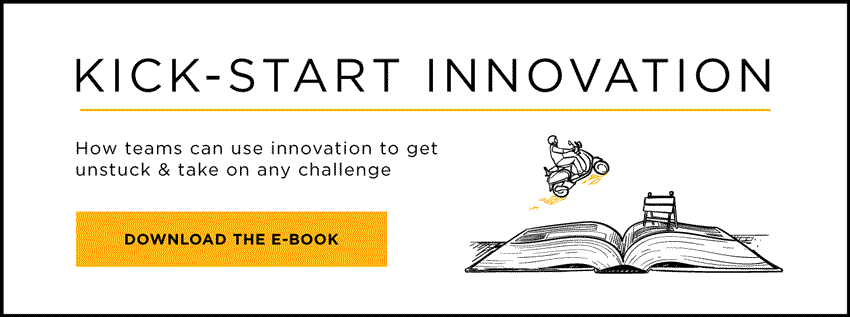People have a lot of preconceived notions about creativity — most of which are wrong.
Most people come to design thinking workshops hyper alert for any challenge that pushes them outside of their creative comfort zone. They believe only certain types of people are “creatives,” and that if they eagerly participate in a creative activity they will look foolish in front of their peers. As children these kinds of fears would never even have occurred to us, but as adults they can be paralyzing.
Design thinking involves lots of creativity — including drawing, which seems to be the thing that adults fear the most. These fears about creativity have to be overcome if participants are going to fully engage in the design thinking process.
So, I start most classes by addressing the myths about creativity that are holding them back from tapping into their true creative potential. The first:
Creativity ≠ Artist
As a design thinking facilitator, this is a problem I tackle all the time. Most people come to these workshops (mistakenly) assuming that creativity and artistry are the same thing — and that if they can’t draw like Banksy or paint like Picasso they shouldn’t even try.
While it’s true that artists are creative, that is just one of many versions of creativity people bring to the table — and they are all equally relevant.
Consider Hanoch Piven, the Israeli portrait artist whose work has been featured in Rolling Stone, Time and Newsweek; who’s created famous portraits of world leaders, and produced art for national ad campaigns. Piven has boldly admitted that he can’t draw. All of his art is made with found objects, yet he is known for being one of the most creative artists in the market today. He regularly speaks about how as a child his teachers tried to persuade him to give up art because he didn’t have the same conventional talent of his peers, but he persevered, and now he gives Ted Talks on creativity.
The point is that creativity isn’t art. As my teenage daughter defines it: “creativity is the willingness to be original.” Whether that is through making portraits out of rotten vegetables, designing a killer spreadsheet, or crafting the perfect drawing of your next product, as long as you do something that no-one else has done, you are being creative.
That being said, in design thinking we spend a lot of time drawing and building things out paper, pipe cleaners, and clay. If your creative juices flow more toward words, or numbers, or big idea, this part of the process can be daunting. As adults we believe the work we produce needs to achieve a certain level of sophistication to be acceptable — and when we can’t draw that can feel impossible to achieve.
No Sophisticated Artistry Required
In design thinking, sophisticated artistry is not the point. The goal of drawing or sculpting an idea is to help the team interact with it in a new way. By creating a visual representation of a concept we show (versus tell) the team what’s in our heads. As IDEO’s Tim Brown often argues, to express the functional and emotional merits of an idea, you have to make it visual.
Most of the time we put time boxes around these creative session specifically to get around the need to be perfect. Once I convince participants that they don’t have to be artists to draw their ideas, and that their peers are too nervous about their own stick figures to judge someone else’s, it unlocks their creative juices and allows innovative ideas to flourish.
If you are still not convinced, pick up a copy of The Back of the Napkin: Solving Problems and Selling Ideas with Pictures. It’s a bestselling book about how a simple drawing can be more powerful than the “slickest PowerPoint presentation,” and why even the most basic drawing is enough if it conveys your idea to the world.
Then the next time you are invited to participate in solving a challenge, let go of your preconceived notions about what it means to be creative. You have what it takes to be a part of that process, you just have to tap into that creative side of yourself and let go of fears about what people will think.
My next blog explores creative myth #2, that creativity is an absolute.
Learn how to enable innovation skill-building at scale or download our free ebook Kickstart Innovation: A Guide for Organizations.
Kimberly Douglas, SHRM-SCP, CPF, is President of FireFly Facilitation, Inc., and is a nationally recognized strategic planning, team effectiveness, and innovation expert. Over the past 25 years, she has collaborated with hundreds of leaders — at organizations such as Coca-Cola, Home Depot, McKesson, AT&T, and even the U.S. Marine Corps — to dramatically improve their business performance. A SHRM Senior Certified Professional and a Certified Professional Facilitator, Kimberly also holds a Master of Science in industrial/organizational psychology. Prior to founding FireFly seventeen years ago, Kimberly was an organization effectiveness manager for Coca-Cola; a Director of Consulting with the Hay Group; and served in HR leadership roles in the hospitality, telecommunications, and healthcare industries.
